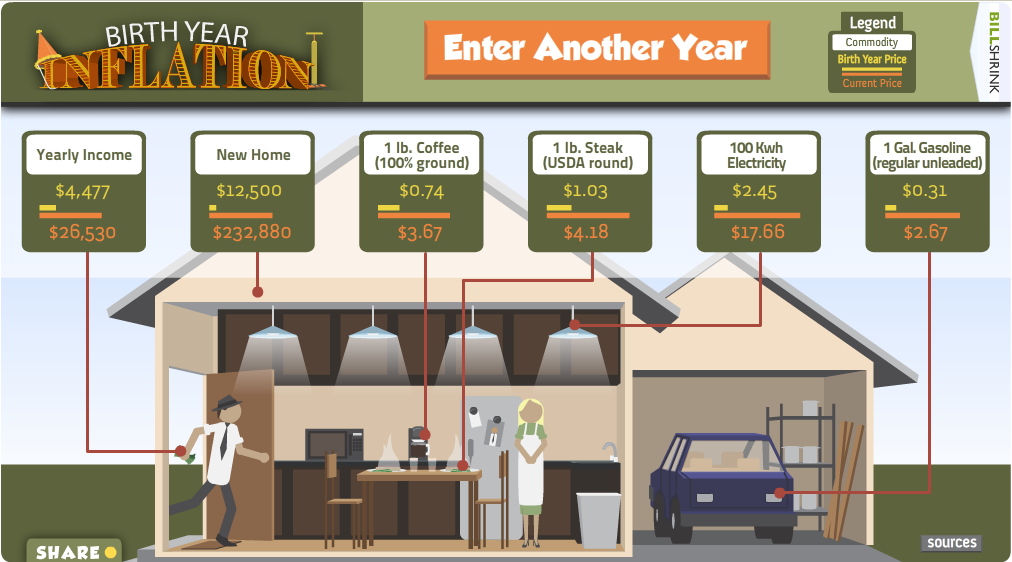by The Big Picture|Barry Ritholtz
This is fun: Enter the year if your Birth, and see what various items cost vs today:
click for interactive graphic

Here’s mine:

Continue








“In the short term, the biggest global economic worry remains oil prices. Egypt itself isn’t a big energy producer. But significant shipments of oil and petroleum products pass through Egypt each day on their way from the Mideast to European and U.S. markets.
About a million barrels a day of crude and refined products are shipped northward on the Suez Canal, according to estimates from the U.S. Department of Energy. A separate pipeline linking the Red Sea and the Mediterranean carries another 1.1 million barrels a day. Together, that is roughly 2% of global oil production.
If oil shipments through Egypt were disrupted, European supply—and global prices—would be “affected tremendously,” said Dalton Garis, an associate professor in petroleum-market behavior at the Petroleum Institute, an energy-research center in Abu Dhabi.
So far, oil flowing through both conduits appears unhindered. But a dusk-to-dawn curfew across the country had shippers operating in the canal warning customers over the weekend of potential delays and difficulty in contacting shipping agents and pilots and arranging for spare parts. Including the oil flows, about 8% of the world’s seaborne trade passes through the canal, according to Egyptian government figures.
“The protests have no effect on the shipping traffic,” Abdul Ghani Mohamed Mahmoud, a spokesman for the Suez Canal Authority, said Sunday. “Everything is going as usual,” he added. Officials at Arab Petroleum Pipeline Co., which owns the Suez-Mediterranean pipeline, couldn’t be reached to comment. [..]

“We do not believe in Chinese exceptionalism. China’s economy is no different from any other, in spite of the inevitable Chinese characteristics. If there are such things as economic laws, they work just as well in China and for Chinese businesses as they do in other markets.”
From Red Capitalism, The Fragile Financial Foundation of China’s Extraordinary Rise, p ix
~~~
“What Chinese parents understand is that nothing is fun until you’re good at it. To get good at anything you have to work.”
From “Why Chinese Mothers Are Superior” by Amy Chua, Wall Street Journal, January 8, 2011


Deutsche Bank AG Chief Executive Officer Josef Ackermann said unregulated financial companies such as hedge funds may pose a systemic risk to the economy if oversight isn’t increased.
“You have an unregulated area which becomes — as a consequence of all the regulatory changes — more and more important,” Ackermann, 62, said in an interview at the World Economic Forum in Davos, Switzerland. “You may one day wake up and realize that the systemic challenges are so big that you will have to bail out or at least help support the unregulated sector.”
Ackermann’s warning echoes comments made by former U.S. Treasury Secretary Lawrence Summers, who said this week in Davos that regulators haven’t paid enough attention to problems that could emerge in “a large, less healthy buccaneer sector.” Hedge funds have dodged the brunt of new global banking regulation aimed at avoiding a repeat of the worst global financial crisis since the Great Depression.
“If you separate utility banks from casino banking, you will one day realize that casino banks are also counterparties to corporations but also to other banks and to asset management and to governments,” Ackermann said yesterday. “It would be somewhat naïve to assume that if you have a strong regulated sector and leave the unregulated in the open, that you will never have systemic risk.”
Follow Us